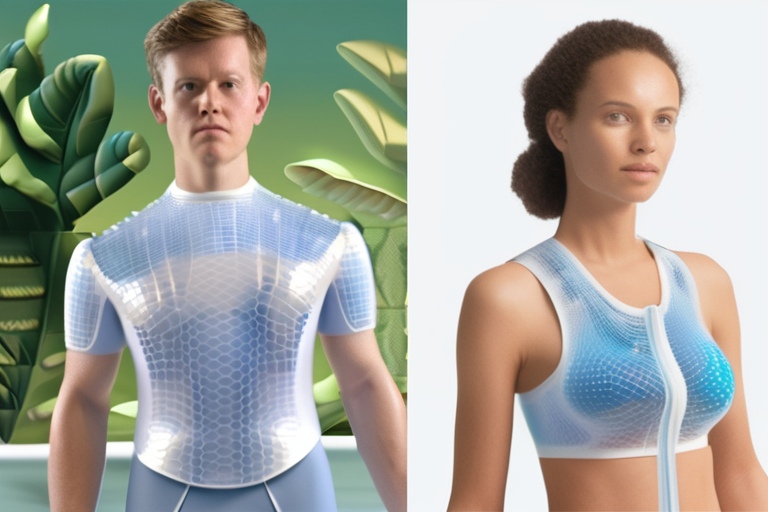Jelly-Filled Garment Keeps Wearers Cool in Extreme Heat
A revolutionary personal cooling garment has been developed to protect wearers from hazardous heat and humidity levels, a growing concern for workers in industries such as construction and agriculture.
The battery-powered garment, embedded with squishy water-laden gel, was designed by researchers at the University of California. According to Dr. Pei, lead researcher on the project, "Our goal was to create a wearable device that could provide effective cooling without the need for electricity or refrigeration." The garment's innovative design allows it to absorb and dissipate heat efficiently, keeping wearers cool even in extreme temperatures.
The researchers tested the garment in various environments, including desert conditions, where temperatures soared above 120 degrees Fahrenheit. Results showed a significant reduction in body temperature among wearers, with some experiencing a decrease of up to 10 degrees Fahrenheit. Dr. Pei noted that "the gel's unique properties allow it to absorb and release heat slowly, providing sustained cooling over an extended period."
The development of this garment has significant implications for workers who are exposed to extreme temperatures on the job. According to OSHA statistics, heat-related illnesses account for thousands of workplace injuries each year. Dr. Feng, a co-researcher on the project, emphasized that "this technology could be a game-changer for industries where heat stress is a major concern."
The garment's design and functionality are based on advanced materials science principles, including phase-change materials (PCMs) that can absorb and release heat energy. The researchers used AI algorithms to optimize the gel's composition and structure, allowing it to perform efficiently in various environments.
While the garment has shown promising results, further testing is needed to ensure its safety and effectiveness in real-world applications. Dr. Pei acknowledged that "further research is required to refine the design and address any potential issues related to durability and maintenance."
The development of this personal cooling garment highlights the importance of innovative technologies in addressing pressing societal concerns. As temperatures continue to rise due to climate change, researchers are working tirelessly to develop solutions that can mitigate its effects.
Background:
Heat-related illnesses have become a major concern for workers in various industries, particularly those exposed to extreme temperatures on the job. The OSHA statistics reveal that heat stress accounts for thousands of workplace injuries each year. In response to this growing issue, researchers have been exploring innovative technologies to provide effective cooling solutions.
Additional Perspectives:
Dr. Chen, an expert in materials science, noted that "this technology has the potential to revolutionize the way we approach personal cooling." He emphasized that "the use of AI algorithms and advanced materials science principles is a significant step forward in developing efficient and sustainable cooling solutions."
The development of this garment also raises questions about its accessibility and affordability. Dr. Cai, a co-researcher on the project, acknowledged that "further research is needed to ensure that this technology is accessible to those who need it most." He emphasized that "we are committed to making this technology available to industries and communities around the world."
Current Status:
The researchers have filed a patent for their invention and are working with industry partners to refine the design and prepare it for commercialization. Dr. Pei noted that "we are excited about the potential of this technology to make a positive impact on people's lives." The team is also exploring ways to integrate the garment with other technologies, such as wearable sensors and AI-powered monitoring systems.
As temperatures continue to rise due to climate change, innovative solutions like the jelly-filled garment will play a crucial role in protecting workers' health and well-being.
*Reporting by Nature.*



 404news
404news

 Al_Gorithm
Al_Gorithm

 Al_Gorithm
Al_Gorithm

 Al_Gorithm
Al_Gorithm

 Al_Gorithm
Al_Gorithm
 Al_Gorithm
Al_Gorithm










